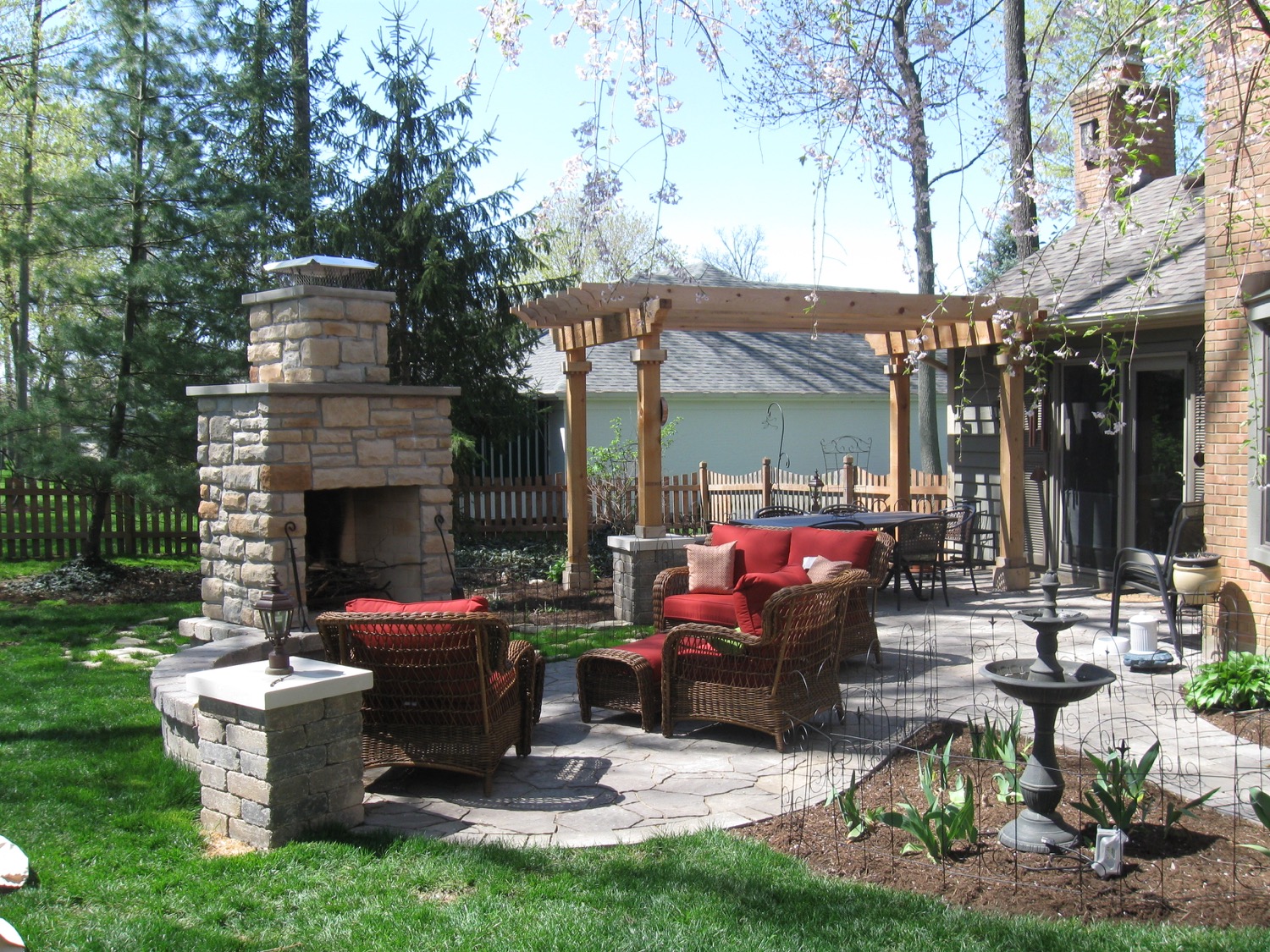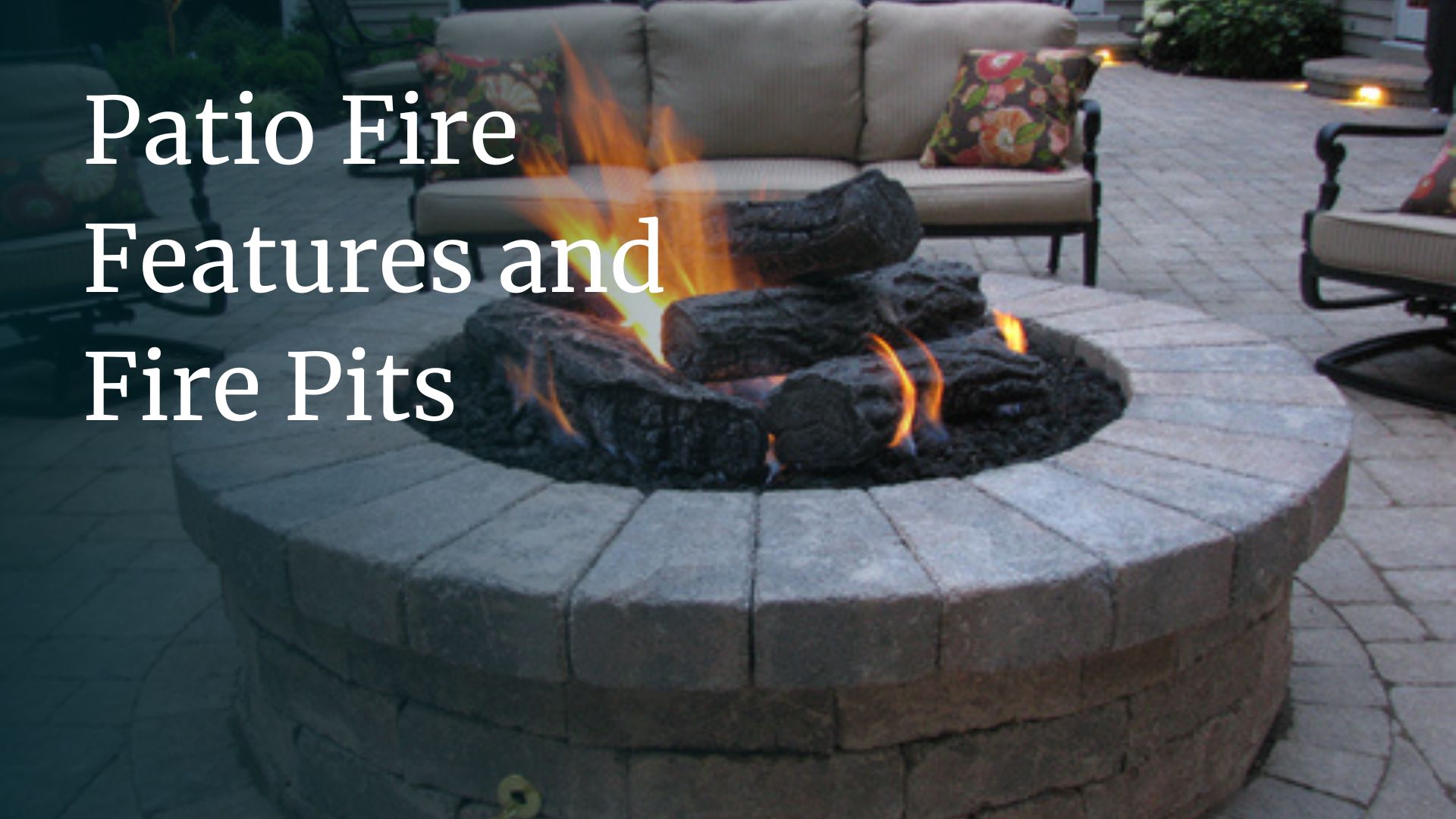Conjure up with me a fall memory. Beautiful leaves, football Saturdays, and crisp evenings around a campfire come to mind for many. About that campfire… What makes it so magnetic? Is it the dancing flames? The gentle warmth? A hint of smoke or cooking food in the air? Or is it the way the warm light dances on the faces of loved ones around the fire. At any rate, fire is magnetic. I find myself sort zoning out while staring into the dancing flames…that’s why patio fire features are HOT.
Not surprisingly, as we look for ways to relax, one of the trends gaining interest is fire in the landscape. No, not the desert wildfire type, but contained campfires, grills, and fireplaces – not to mention torch lighting or fire/water features. What options are available? What are benefits of each? What do I need to consider as I work a fire feature into my setting?
The basic types of fuels that are common for contained patio fire features are gas and wood. Natural gas comes from a city supply, which runs through the neighborhood via underground pipes and is sold to the homeowner by a supplier like Vectren. Another gas option is propane, which is distributed in hand-carried steel tanks or delivered into a tank on your property. Think of the beach ball sized white tank that accompanies most gas grills. Either gas option requires knowledge and probably a licensed plumber to hook up. Gas is distributed under pressure and must be regulated for a controlled burn. Stainless rings distribute the gas and may include an electic or battery powered ignitor. The flame height and volume is controlled by a valve, giving more control over heat-output. Wood is another popular fuel. Although it is messy to store, more hassle to clean up after, and harder to acquire, wood gives ambiance that is just simply “the real thing”. Many of us like to hearken back to rural roots with a good old fashioned campfire – and gas seems sterile.. However, many prefer the simplicity and cleanliness of gas, not to mention the ease of starting and maintaining the fire. How much of a traditionalist are you?
 Where the burning takes place is a whole different conversation. There are many types of containers that are safe for burning: from firepits to portable patio bowls to fireplaces to ignited gas bubbling through water. Lets look at a couple of the more common ones. Perhaps that simplest design is the firepit. Constructed of mortared brick or stone, retaining wall block, or maybe just a grouping of boulders, a firepit contains the burn within a certain area. It may also provide a place to sit or rest your feet near the flame. Some products will crack when exposed to intense heat, so it may be necessary to line a firepit with a metal ring or heat-resistant fire brick. One benefit of a fire pit is the cost. Another is that firepits allow heat from the fire to go out in all directions. Since heat rises, fire pits that are easily kept low in the landscape allow for more usable heat.
Where the burning takes place is a whole different conversation. There are many types of containers that are safe for burning: from firepits to portable patio bowls to fireplaces to ignited gas bubbling through water. Lets look at a couple of the more common ones. Perhaps that simplest design is the firepit. Constructed of mortared brick or stone, retaining wall block, or maybe just a grouping of boulders, a firepit contains the burn within a certain area. It may also provide a place to sit or rest your feet near the flame. Some products will crack when exposed to intense heat, so it may be necessary to line a firepit with a metal ring or heat-resistant fire brick. One benefit of a fire pit is the cost. Another is that firepits allow heat from the fire to go out in all directions. Since heat rises, fire pits that are easily kept low in the landscape allow for more usable heat.
Maybe a simple firepit is not stately enough for your tastes. You may want to consider an outdoor fireplace. Most fireplaces are constructed with a kit of concrete parts, which can then be clad with various finishes – stone, brick, retaining wall block, etc. They also should be constructed either on a footing or a thickened, reinforced concrete slab to prevent movement. A little creativity and knowledge of concrete block can create unlimited sizes and shapes of fireplace, while mixtures of cladding materials make the veneer interesting. Wood boxes, hearths, and chimney pots can be added as customizing features. Fireplaces can also be functional – pizza ovens and smoking chambers create tasty patio fare. Again, gas and wood are the most common fuels used.
There are several design considerations that you want to consider when planning for your fire feature. One question often asked is about built in seating. If you really like that look, go for it, however I’m not a big fan of it – either the smoke is blowing the wrong direction, the seats are too close or too far away, or they’re just not all that comfortable to sit on for hours. I much prefer flexible seating – chairs that can be moved closer, further away, or out of the smoke. Another consideration is whether the firepit should be in the center of the patio. Here again do whatever looks good, but consider how putting it in the center limits the usefulness of the space. Plan how often you will be using it to determine how much prominence it should have in the plan. If you have lots of other patio space, a dedicated area might make sense, but if you like to be flexible in how you use your patio, put the firepit off to one side – preferably the east side so west breezes blow the smoke away from the patio. Pay special attention to what is near the firepit or fireplace. There will inevitably be coals that pop out of the fire – make sure that mulch or other flammable items are away from that zone. Putting some thought into the design and location of the fire feature will ensure safety and enjoyment of all involved.
It may be hard to believe now, but soon a nice fire will feel good. Plan now for fall barbeques, football game parties, and outdoor family time enjoying s’mores and hotdogs. Make this the fall that your family remembers!




